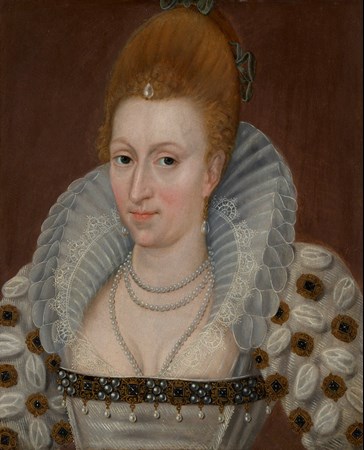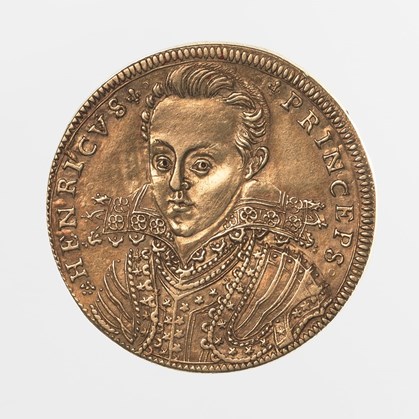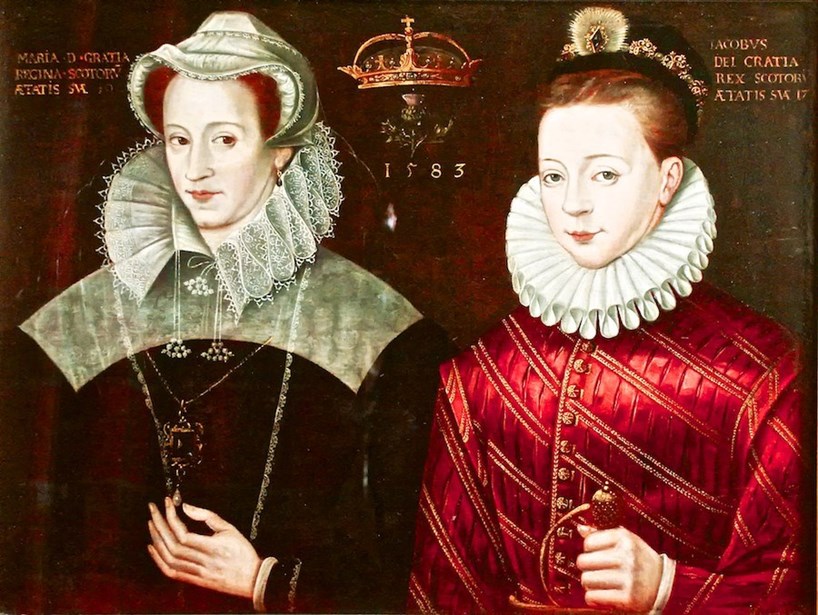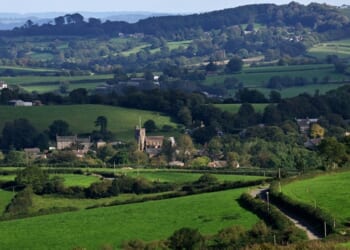THIS year marks the 400th anniversary of the death of James VI and I. He died on 27 March at his country house, Theobalds, in Hertfordshire and was buried in Westminster Abbey on 7 May.
Within weeks of his funeral, his successor, Charles I, had not only dispatched the Master of the King’s Musick abroad, on a covert mission to buy paintings indiscriminately to broaden the royal collection, but had created the post of Surveyor of the King’s Pictures (25 May), a Household appointment summarily abolished by our late Queen in December 2020 and revived by her son for Anna Reynolds (3 December 2023), formerly Deputy.
Charles I had visited the Bourbon court in Paris and the Spanish courts in Madrid, Valladolid, and at El Escorial on his ill-advised 1623 jaunt into Europe to see for himself his intended spouse, the Infanta of Spain. In addition to the Old Master paintings by the likes of Titian and Correggio, he and his travelling companion, another art collector, George, Duke of Buckingham, had encountered the work of the contemporary Flemish painter, diplomat, and spy Peter Paul Rubens.
Those two seemingly unrelated events in 1625 signal how important Charles deemed the collection of art that he had inherited. His elder brother, Henry Frederick, who predeceased him in 1612, and his late mother, the Lutheran-born Anna of Denmark, a secret Catholic convert (1593), had died seven years later. Both had collections that needed to be inventoried and organised. Charles appointed to the post Abraham van der Doort, who had overseen his brother’s cabinet of treasures after the example of Rudolph II of Prague.
 National Galleries of Scotland. Purchased 2019John de Critz, Anna of Denmark, 1574-1619 (1605)
National Galleries of Scotland. Purchased 2019John de Critz, Anna of Denmark, 1574-1619 (1605)
The composer and lutenist Nicholas Lanier (1588-1639) spoke fluent Italian and was something of an art connoisseur. He was sent to Italy to buy paintings in Venice and in Rome, where he arrived in a Jubilee Year. In Venice, he began negotiations for the later purchase of paintings from the celebrated Gonzaga collection in Mantua; and in Rome he obtained a papal export licence (29 January 1626) to send back paintings by Guercino, Sebastiano del Piombo, and Palma Il Vecchio, among others.
As a result, exhibitions have tended to concentrate on Charles as the supreme art collector in British history. Much of his collection can be recreated from the meticulous accounts of van der Doort who took his own life (1639) when he mislaid a miniature that Charles I particularly prized. It turned up later. Within five years, the monarch whom he had served so assiduously was beheaded.
This emphasis on Charles I has been at the expense of overlooking his father’s artistic and European interests, and the current exhibition in the central hall of the Portrait Gallery on Queen Street, in Edinburgh, does much to address this, although it cannot include James’s perhaps most remarkable artistic commission, the 1617 refurbishment of Holyroodhouse Chapel, ruinous since the Reformation.
There, the introduction of statues of saints and apostles for his intended return visit to Edinburgh occasioned public opprobrium. This polemical criticism allows us to understand how closely he had been inspired by the visual and figurative art of the Lutheran courts that he had seen, particularly at Elsinore, when he journeyed to Denmark in 1589 to fetch his bride. Sadly, no designs survive.
Colour, decoration, and light were all hallmarks of his Renaissance courts, both north and south of the Border. The textiles and depicted fabrics in this display show that the king enjoyed opulence and had a canny sense for self-promotion.
Nearly 150 artefacts here include paintings, watercolours, miniatures, prints, lavish dress, and, of course, books, as James was a widely published author. The frontispiece of the Authorised Version of the Bible (1611) on show here states royal authority while the floral emblems of the kingdoms that he came to unite decorate the book headings. The king and the Verbum Dei are one.
As befits a portrait gallery, it is the women and men of the day who command attention and who justify, again and again, if cause is needed, a visit to “the Reykjavik of the South” (Stoppard). For those who choose not to pay the city’s overblown accommodation charges, the catalogue, Art & Court of James VI & I, edited by Kate Anderson, is comprehensively illustrated with four informative essays.
James VI had not been well served by portraitists in his native land, however generously we view the sparrowhawk, perched nervously on the eight-year-old king’s wrist. When he encountered the paparazzi at York on his progress into England in May 1603, he reacted angrily with vengeful violence. But London and the peace with Spain (1604) gave him to understand their diplomatic importance. As he sought by the word to unite the two kingdoms, he used the image to promulgate the new dynasty, with his heirs and successors. When he did, once, travel back to his northern kingdom, he lay on the ground across the Border: in his person he embodied the Union of the Kingdoms.
Not yet 40 at his accession to the English throne, he sat to John de Critz. In two attributed portraits from his first year in London (Dulwich Picture Gallery and the National Galleries of Scotland: Portrait), he affects indifference rather than confidence. The state of the Union was still open to question at Elizabeth’s death.
Quite different is the 1595 portrait of him at the age of 29, painted at Stirling by Adrian Vanson, in which, despite a suit of Genoese and Lucchese silk, James looks nervous as a first-time father. The diamond “A” on his hat badge alone proclaims him as a devoted husband. Although the couple went on to have several more children. only those born in Scotland survived to adulthood; Princess Elizabeth was born at Falkland Palace in August 1596 and Charles in Dunfermline Palace in November 1600.
 National Galleries of Scotland. Purchased 1990Unknown artist, Henry, Prince of Wales, 1594-1612. Eldest son of James VI and I (c.1612)
National Galleries of Scotland. Purchased 1990Unknown artist, Henry, Prince of Wales, 1594-1612. Eldest son of James VI and I (c.1612)
Aged just ten, Henry Frederick is captured by Robert Peake in a portrait of formal innocence which once graced Attingham Park (now loaned to the NGS by the Earl of Mar and Kellie). Peake painted his sister (a painting formerly in Hengrave Hall, Suffolk, and now held by the National Portrait Gallery, London) in 1610, and, in the same year, their brother Charles, as Duke of York and Albany (NGS). After the death of Henry Frederick, aged 18, in November 1612, the Stuart succession would depend on them.
The courtiers stand around. The last of four regents who ruled Scotland disastrously during James’s minority for 11 years, the red-bearded James Douglas, 4th Earl of Morton, was denounced and imprisoned in 1580. He was painted shortly before that, standing on a loggia with a view of his island home behind. His gloves are set on the table beside him. The Netherlandish artist had probably seen compositions by Titian, but it does not translate well. Before he was executed (June 1581), he admitted that he might have been “a filthie abusare of my body in the pleasure of the flesh”, but he had always supported Kirk and King.
Rather better observed are the portraits of the poet William Drummond of Hawthornden, a contemporary of John Donne, looking as recklessly handsome as the later Dean of St Paul’s in a portrait of 1612, and that by Rubens (c.1625) of the royal favourite, Buckingham, who is captivated by his own self-advancement (Pollock House, Glasgow Museum).
Even in her later years, Queen Anna set fashion style; Marcus Gheeraerts portrays her in a voluptuous dress that has no sideways (RCIN 404437) in stark contrast to the severe, po-faced Lady Arabella Stuart (NGS), the king’s closest Scots relative, painted in 1605. In 1607, the Venetian ambassador, Zorzi Giustiniani, observed in an ungentlemanly fashion that she was “not very beautiful”, although he commended her languages and study of Greek and Latin. One should never ask a lady her age, but is Arabella, in black taffeta with her watch and lapdog, really not yet 30?
 Collection at Blair Castle, PerthshireUnknown artist, Double Portrait of Mary, Queen of Scots and James VI (1580s), oil on canvas
Collection at Blair Castle, PerthshireUnknown artist, Double Portrait of Mary, Queen of Scots and James VI (1580s), oil on canvas
On his entry into England, another Venetian diplomat, Giovanni Carlo Scaramelli, reported that pub signs for “The Queen’s Head” depicting the late Elizabeth were rapidly overpainted with depictions of her cousin, the new sovereign’s mother, Mary, Queen of Scots, whom Elizabeth had sentenced to death in 1587.
Hailed as Britain’s Solomon, uniting the North and South Kingdoms of Judah and Israel, James was also mocked; “Hosanna to the Son of David” was a cry taken up by those aware of the close relationship that his late mother had enjoyed with her Latin secretary, David Rizzio.
James sought European peace and ecumenical links with the Orthodox and brought about the Union of the Kingdoms which survives to this day.
“The World of King James VI & I” is at the National Galleries of Scotland: Portrait Gallery, 1 Queen Street, Edinburgh, until 14 September. Phone 0131 624 6200. www.nationalgalleries.org















